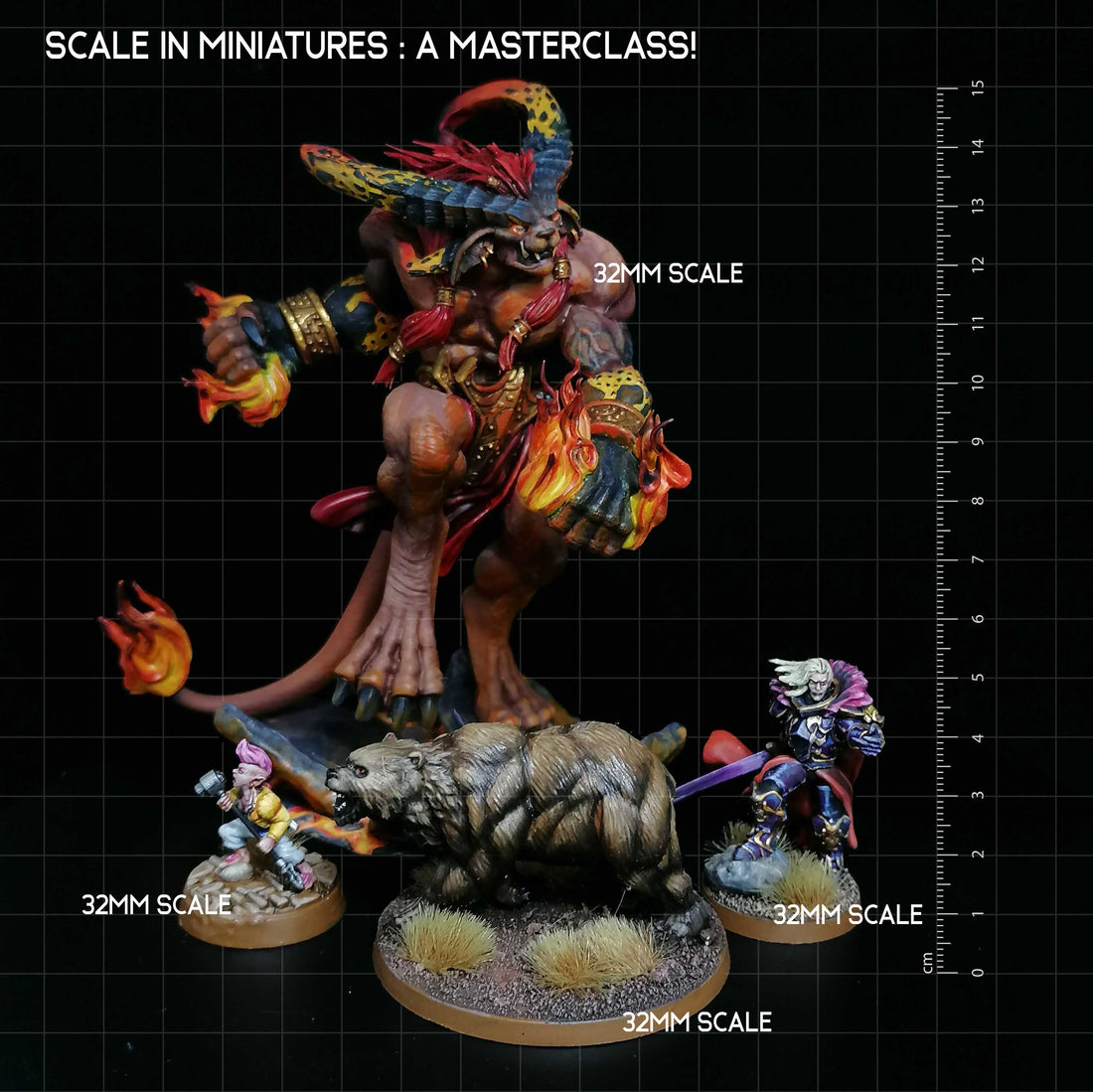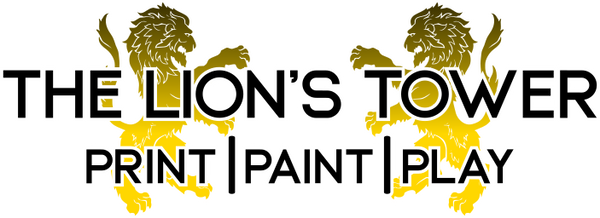
Miniature Scale - Size DOESN'T matter!
Dan KellyShare
How often do you see companies offering the same miniature in 32mm, 40mm, 50mm, 75mm and 150mm scales? Its become a lot more common since the advent of 3D printing, and in fact before consumer 3D printing this phenomenon was actually unheard of!
The fact is that you cannot produce the same model in multiple scales by simply changing the size that it prints at, because scale is sculpted into the model.
So what do I mean when I say "Scale"?
With table top miniatures we're typically dealing in a set range of relative scales - this is not to be confused with modelling scales that are more precise and use a scale ratio such as 1:72 or 1:56.
In wargaming miniatures, we typically deal in 6mm, 10mm, 15mm, 20mm, 25mm, 28mm, Heroic 28mm, 32mm, 54mm and 75mm. This is measured with the model in a T pose from the bottom of the foot to the eyeline of a standard human character. That's not to say that you can't have characters smaller or larger than that, but the level of detail on them should be relative and look consistent across a range.
The image below shows our Captain Zed's Mercenary Company set - the characters are all individualised and have their own personalities and a variety of different body types and height differences, yet the scale is clearly uniform and they obviously belong in the same set.

54mm scale and up tend to be reserved for display pieces, whilst historical gaming is usually between 15mm-28mm.
Games-Workshop pioneered the Heroic 28mm scale with miniatures that were 28mm scale in size but have comic book style exaggerations in the limb, head, hand and head sizes - rescale a heroic 28mm scale miniature to actual human size and it looks insane, but it reads great on the table and paints well so it became popular.
In recent years we've seen a bit of a popularity shift more towards 32mm scale as a gaming standard because you can still get good detail but without having to comically exaggerate the features of the model. They also provide a nicer painting experience whilst not looking entirely out of place with 28mm miniatures. Everything we produce is by default sculpted at 32mm scale, with just a few exceptions with some of our display pieces. We can rescale them to 28mm for you by request without any significant losses as its not a huge leap, but trying to reduce them far beyond that is a big ask. You can check out our blog post on resizing models in Lychee Slicer (our slicer of choice) HERE
How does scale manifest in a miniature?
Scale accounts for a wide range of stylistic exaggerations and simplifications in a sculpt that help the details to read well when it is on the table top. It also helps to ensure that the end product is actually usable. Exaggerations can range from simplifying shapes, removing small textures, thickening details to ensure they are visible in the final product, and also ensuring there is a 1mm-1.2mm minimum thickness across the model to limit bending/breaking during gaming and/or transportation. 1-1.2mm isn't an absolute but it certainly should be considered a best practice across the industry. This does obviously mean that the smaller scale you work in, the more impressionistic your sculpts will become - a sword in 6mm scale may very easily be mistaken for a baseball bat due to thickness requirements!
With this all in mind, I'm sure you can see how the issue of scale will arise when trying to shrink a large 75mm scale model with tiny details and thin parts down to say 28mm.
How do I sculpt for a particular scale?
Once you have determined what scale you are going to be using, the first thing I always recommend is looking at models from manufacturers that you admire that produce models in your chosen scale. Buy some of them! Even better, paint them too. Once you've done this, pay careful attention to all of the layering of clothing, armour etc and look at the relative thickness of the layers. Look at the weapons and the textures on the model, then attempt to replicate them yourself. This is essentially a process of self learning through trial and error which will require the printing and inspection of your miniatures to see if you've achieved the same results as your reference models.
Forget about making a model that is going to be a beautiful render - the only concern should be the final printed model! polishing a model to within an inch of its life to produce a render that would be at home in a AAA video game title is a waste of your time and effort and will result in a model that isn't fit for it's intended purpose (as a miniature on the table top).
Detail Consistency
The one thing I constantly have in my mind when I produce a range of miniatures is the consistency of textural elements. Small details like rivets on armour will be a pretty standard size, so a larger model's armour wouldn't have larger rivets, there would simply be more of them. Scratches, nicks and dents in armour are all made by the same kind of swords, arrows and maces, so larger miniatures again would have the same size damage as a smaller model, just more of it. Chainmail and fur texture is another big one - The density of the texture on these kinds of elements should also be consistent from model to model - larger models will just have a LOT more of it! Check out the image below - 3 models of different sizes that each feature chainmail - from one model to the next the rings are the same size so you get a consistent feeling across them all even though there are obvious size differences.

That is why a larger model will typically cost more to produce - We're not just sculpting a normal sized model and making it bigger, we're doing 2-3 times the amount of detailing work to get it to look like it belongs in the world with the rest of the range.
In conclusion, the world of tabletop miniatures has been transformed for better or worse in recent years, but to the key to success in the this hobby of ours hinges on a fundamental understanding of appropriate and consistent scale - Size doesn't matter, but the consistency of details that are appropriately stylised and exaggerated considering the end use (painting and gaming) are critical factors. As the industry continues to evolve, understanding and mastering scale and style will remain at the heart of creating captivating and practical tabletop gaming experiences.
